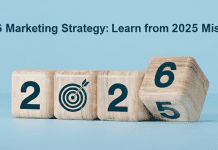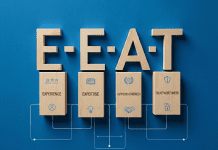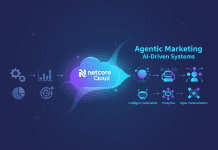In 2025, hyper-personalization has emerged as the gold standard for engaging customers, creating loyalty, and driving revenue growth. Leveraging AI, businesses can deliver deeply customized experiences tailored to the unique preferences and behaviors of every individual.
This transformative approach is more critical than ever as consumer expectations continue to rise. In this article, we’ll explore what hyper-personalization entails, how AI drives it, the strategies and tools to implement, and what the future holds.
What is hyper-personalization?
Extreme personalization is an advanced customer engagement strategy that goes beyond traditional personalization. While personalization might involve addressing customers by their names or suggesting products based on past purchases, hyper-personalization delves deeper by utilizing real-time data, behavioral insights, and predictive analytics to craft highly tailored experiences.
Evolution and Importance
As technology evolves, so do customer expectations. Gone are the days when basic personalization sufficed. Today’s consumers demand relevance, immediacy, and connection. Extreme personalization is the bridge that meets these expectations, transforming mundane interactions into meaningful engagements.
The Role of AI in Hyper-Personalization
Artificial Intelligence is the engine behind hyper-personalization, unlocking capabilities that were once unthinkable. Through AI-powered technologies like machine learning, natural language processing (NLP), and deep learning, businesses can:
- Analyze massive datasets to uncover actionable insights.
- Predict customer behavior with uncanny accuracy.
- Adapt experiences in real-time based on user interactions.
These technologies empower companies to engage customers at an unprecedented scale and sophistication.
Benefits of Hyper-Personalization
- Enhanced Customer Experience
By addressing individual needs, extreme personalization makes every interaction feel intuitive and seamless. - Increased Conversions
Tailored recommendations lead to higher engagement and conversion rates. - Building Customer Loyalty
When customers feel understood, they’re more likely to remain loyal. - Efficient Resource Allocation
AI ensures resources are directed toward strategies with the highest ROI.
Hyper-Personalization Strategies
- Behavioral Tracking and Predictive Analysis
AI captures and analyzes how customers interact with digital platforms, predicting what they’re likely to want next. - Real-Time Data Integration
extreme personalization thrives on current, accurate data from various sources. - Dynamic Customer Segmentation
Instead of static categories, AI dynamically adjusts segments based on evolving behaviors. - Personalized Product Recommendations
AI suggests items customers are most likely to purchase, improving cross-sell and up-sell opportunities.
AI-Driven Tools for Extreme Personalization
The digital landscape of 2025 offers a wealth of AI-powered tools for businesses:
- CRM Platforms: Tools like Salesforce Einstein use AI for deeper insights.
- Marketing Automation: HubSpot and Marketo enable hyper-targeted campaigns.
- AI Chatbots: Conversational AI like ChatGPT tailors interactions in real-time.
- Content Optimization: Platforms like Optimizely ensure messaging resonates with specific audiences.
Data: The Backbone of Hyper-Personalization
Data is the lifeblood of extreme personalization. AI relies on:
- Behavioral Data
What do customers do on your platforms? - Transactional Data
Purchase history and patterns. - Contextual Data
Information like location and time of engagement.
Transparency and consent are paramount to maintaining trust.
AI Algorithms in Hyper-Personalization
AI leverages sophisticated algorithms, such as:
- Collaborative Filtering
Predicts preferences based on similarities with other users. - Content-Based Filtering
Recommends products by analyzing item characteristics. - Contextual Bandit Algorithms
Balances exploration and exploitation in recommendations.
Real-World Applications
- Retail and E-Commerce
AI tailors recommendations based on browsing history and preferences. - Healthcare
Personalized treatment plans and reminders improve outcomes. - Finance
AI-driven tools recommend investment strategies. - Entertainment
Platforms like Netflix use AI to keep users engaged.
Challenges in Implementing Hyper-Personalization
- Data Privacy
Striking a balance between personalization and privacy. - Integration Issues
Combining modern AI tools with legacy systems. - Human Touch
Avoid over-reliance on automation to maintain authenticity.
Future Trends in AI-Driven Hyper-Personalization
- Generative AI
Creating tailored content at scale. - Conversational AI
Driving deeper engagement through intuitive dialogues. - Predictive Hyper-Personalization
Forecasting the future needs to pre-emptively cater to customers.
Best Practices for Leveraging AI in Extreme Personalization
- Start small, then scale.
- Invest in robust data infrastructure.
- Regularly monitor AI systems for bias and accuracy.
Measuring Success in Hyper-Personalization
Key metrics include:
- Customer Retention Rates
- Conversion Rates
- Engagement Metrics
Use tools like Google Analytics and Tableau for tracking.
Conclusion
AI-driven hyper-personalization is reshaping how businesses engage with customers, driving loyalty and revenue in equal measure. As tools and strategies continue to evolve, businesses that embrace these innovations will thrive in the competitive landscape of 2025.
I hope you find the above content helpful. For more such informative content please visit Martecedge.










